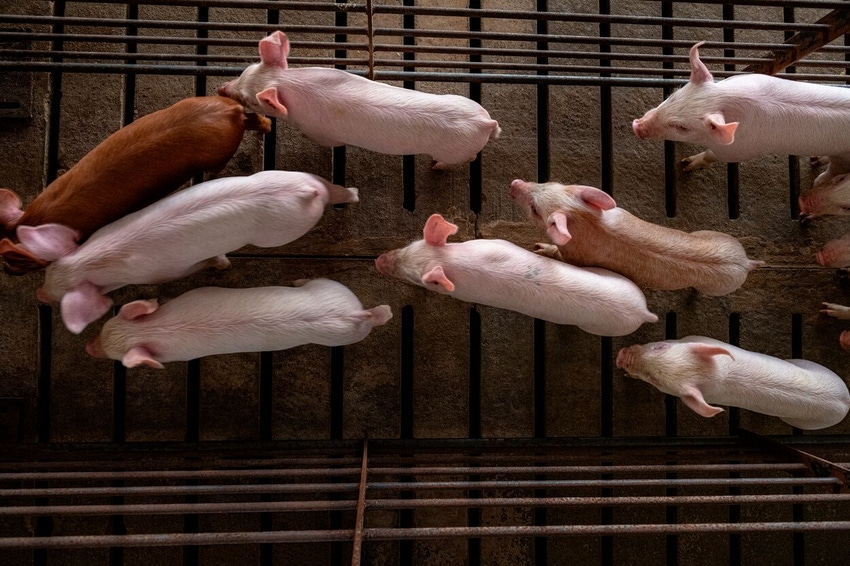Rising heat: U.S. pork producers find summer success amid economic challenges
Upcoming forecasts, incorporating ongoing production drivers, executed hedging strategies and LRP/LGM positions along with their corresponding market shifts, are crucial for decision-making.
August 17, 2023

By Daryl Timmerman, Compeer Financial
Pork producers across the United States are enjoying a much-needed boost in profits this summer. The Iowa State Farrow to Finish Estimated Livestock Returns model recorded a significant positive shift in July, marking the first month of profitability since August 2022.
In a previous article, we delved into the aggregate losses resulting from monthly pig sales starting in September 2022 through the present. When we factor in the $1.99 profit per pig posted in July 2023, the total cumulative loss now stands at $320.
To put this in perspective, during a 26-month period during the 2008-2009 cycle, where only two months yielded profits, the cumulative loss amounted to $318. This underscores the current economic challenges faced by producers, representing the most demanding period since the pre-2008/2009 era.
Based on current month-to-date CME index prices, there’s anticipation that producers will witness profits ranging from $20 to $25 per head in August. However, this positive trend is likely to regress as the season progresses. Forecasts for the crush margin, which considers both feed and hog prices, indicate that margins will hover around neutral to slightly negative levels in September.
Looking ahead, considering the varied losses incurred during the winter months, the markets are projected to experience an average loss of $12 to $15 per month over the next seven months. This translates to an additional $100 in aggregate losses in the scenario of selling one pig per month, culminating in a total equity declines of nearly $400 across a 20-month cycle. Consequently, the overall working capital deterioration is estimated at $440 per sow.
It is important to note that all the figures mentioned earlier predominantly pertain to the “open market” characterization. The Iowa State Model intentionally excludes considerations of hedging or the utilization of Livestock Risk Protection and Livestock Gross Margin strategies. Throughout the industry, producers have diligently collaborated with risk management advisors. Year-to-date data through Q2 reveals that producers within our database showcased average hedging gains of roughly $8 per carcass cwt, without accounting for LRP and LGM loss claims.
Compeer Financial’s forthcoming Q2-2023 database is set to demonstrate an average working capital per sow of approximately $800, with a Q2 decline of $140 per sow leading to a YTD deterioration of $340 per sow. The average value of $800/sow represents a bell curve, signifying proactive efforts of certain producers in seeking solutions to restore profitability.
I truly appreciate the transparent relationships that we have with producers across our portfolio. GAAP-based financial reporting, comparing actual figures to budgeted values, instills confidence in the current scenario. Upcoming forecasts, incorporating ongoing production drivers, executed hedging strategies and LRP/LGM positions along with their corresponding market shifts, are crucial for decision-making. While nothing is certain, having up-to-date and forward-looking information provides a sound foundation for understanding likely outcomes. A proactive approach enables producers, lenders and stakeholders to develop appropriate plans given the circumstances.
Unfortunately, some operations may not successfully navigate the ongoing economic challenges. While the cost of production is improving, it remains elevated compared to historical levels and forecasted hog prices. Health-related events have far-reaching economic consequences. The pork industry has been characterized as a resilient sector, where entry and exit aren’t easily accomplished. Having models that realistically depict potential economic repercussions empowers producers to make decisions before their family’s financial well-being is severely compromised. While this topic is uncomfortable, it’s important to address.
Rooted in agriculture, we hold a responsibility to honor the legacy passed down by previous generations. Similar waves of economic volatility have been witnessed in the dairy industry, prompting varied responses from doubling down on technology to diversifying operations. Pork producers are confronted with similar choices today. Having reliable information facilitates transparent conversations, allowing families to make informed decisions tailored to their circumstances.
My experience as a consultant aiding farm families in generational transitions underscores the rewarding aspect of seeing legacies continue. The passion of the next generation for agriculture and their communities is evident. For many producers, the “Last Man Standing” approach guides decisions, risk management and financial prudence during difficult times. Ultimately, the commitment to staying in business drives actions.
These times can be incredibly hard on relationships, and the importance of emotional and mental well-being cannot be understated. While economics and growth are emphasized, the value of human connections and life’s preciousness should not be forgotten. Support is available from friends, family, local communities, churches and organizations like the state and National Pork Boards. It doesn’t matter who you reach out to, just make the call.
In the end, I remain confident in the U.S. swine industry. The future remains promising, sustained by dedicated individuals committed to feeding the world. Advisors, genetics, facilities and stakeholders along the supply chain contribute to this positive trajectory. Using financial information for proactive management and responsible decision-making will ensure welfare for all of those around us.
Source: Iowa State Model
Timmerman is a senior swine lending specialist for Compeer Financial. For more insights from Daryl and the Compeer Swine Team, visit the website.
You May Also Like



